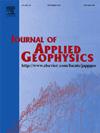基于SBAS-DInSAR的丝绸之路考古遗址地表变形及其影响的假设分析——在西安市的探索性应用
IF 2.1
3区 地球科学
Q2 GEOSCIENCES, MULTIDISCIPLINARY
引用次数: 0
摘要
“丝绸之路:长安-天山走廊路线网络”是列入《世界遗产名录》的一系列遗产地。遗址容易受到局部地面变形的影响,但缺乏对丝绸之路的相应测量。西安是丝绸之路的东方起源地,也是丝绸之路沿线城市中遗址最多的城市。此外,西安地区的地面差异变形问题也更加突出。小基线子集(SBAS)差分干涉合成孔径雷达(DInSAR)是一种分析多个SAR图像对的叠加来测量地面变形的时间序列技术,已经在遗产研究中得到了很好的评估。在这里,我们通过使用SBAS-DInSAR来调查地面的变形,在一些地区与地面大地测量技术相结合,以获得遗产实体的数字模型,从而提供技术见解和参考。具体而言,我们通过SBAS-DInSAR处理了2019 - 2022年的97张Sentinel-1 SAR图像。结果表明,大雁塔和小雁塔位于隆起区,而西汉未阳宫位于沉降区。在视线方向上,高海拔和高海拔抬升速率均超过9 mm/年,且时间序列与地下水补给呈正相关。基于注入含水层导致抬升的基本假设,附近的地下水补给有利于GWGP的修复,为其他古建筑倾斜问题的处理提供了有见地的范例。WP南宫壁沉降小于4 mm/年。在整个监控时期,大明宫保持稳定。兴教寺塔(XP)在2022年5月之前保持稳定,累积变形量为~ 1 mm,并出现沉降趋势。现场观测和数值模拟结果表明,玄奘塔(XZP)在XP处呈西南倾斜,InSAR观测到的局地西北倾斜可能加剧了这种倾斜。这些发现是推测性的,缺乏定量验证或基本事实支持。然而,InSAR记录的是过去,而3D激光扫描记录的是现在。分析过去和现在的科学数据对未来的世界遗产保护具有重要意义。本文章由计算机程序翻译,如有差异,请以英文原文为准。
Hypothetical analysis of ground deformation and its effects on archaeological sites of the Silk roads with SBAS-DInSAR: An exploratory application in Xi'an City, China
“Silk Roads: Routes Network of Chang'an-Tianshan Corridor” is a series of heritage sites inscribed in the World Heritage List. Heritage sites are vulnerable to local ground deformations, but corresponding measurements to the Silk Roads are lacking. Xi'an City is the eastern origin of the Silk Roads and boasts the most sites of all cities along the corridor. Moreover, differential ground deformation in Xi'an has been given more prominence. The Small BAseline Subset (SBAS) Differential Interferometric Synthetic Aperture Radar (DInSAR) is one of the time-series techniques analyzing a stack of multiple SAR image pairs to measure ground deformations, and has been well-assessed for heritage studies. Here we provide technical insights and references by investigating the ground's deformations through the use of SBAS-DInSAR, in some areas integrated with ground-based geodetic techniques to derive digital models of heritage entities. Specifically, we processed 97 Sentinel-1 SAR images from 2019 to 2022 through SBAS-DInSAR. The results revealed that the Great Wild Goose Pagoda (GWGP) and Small Wild Goose Pagoda (SWGP) were located at uplifting areas, while the Weiyang Palace (WP) of the Western Han Dynasty was located in a subsiding area. Along the Line-of-Sight direction, the uplifting rates at GWGP and SWGP exceeded 9 mm/year, and the time series showed positive correlations with groundwater recharging. Based on the fundamental assumption that injections into the aquifer resulted in uplifting, groundwater recharging nearby benefited the restoration of the GWGP, providing an insightful example for the treatment of leaning problems in other ancient buildings. The south palace wall of WP was subsiding less than 4 mm/year. The Daming Palace of the Tang Dynasty remained stable throughout the monitoring period. The Xingjiaosi Pagodas (XP) remained stable with ∼1 mm of accumulative deformation until May 2022 when a subsiding trend was observed. On-site observations and numerical modeling revealed the southwest-leaning status of Xuanzang Pagoda (XZP) at XP, which may be exacerbated by the local northwest leaning observed by InSAR. The findings were speculative and lacked quantitative validation or ground-truth support. Nevertheless, InSAR documents the past, while 3D laser scanning records the present. Analyzing the scientific data from the past and present is of great significance for future preservations of World Heritages.
求助全文
通过发布文献求助,成功后即可免费获取论文全文。
去求助
来源期刊

Journal of Applied Geophysics
地学-地球科学综合
CiteScore
3.60
自引率
10.00%
发文量
274
审稿时长
4 months
期刊介绍:
The Journal of Applied Geophysics with its key objective of responding to pertinent and timely needs, places particular emphasis on methodological developments and innovative applications of geophysical techniques for addressing environmental, engineering, and hydrological problems. Related topical research in exploration geophysics and in soil and rock physics is also covered by the Journal of Applied Geophysics.
 求助内容:
求助内容: 应助结果提醒方式:
应助结果提醒方式:


